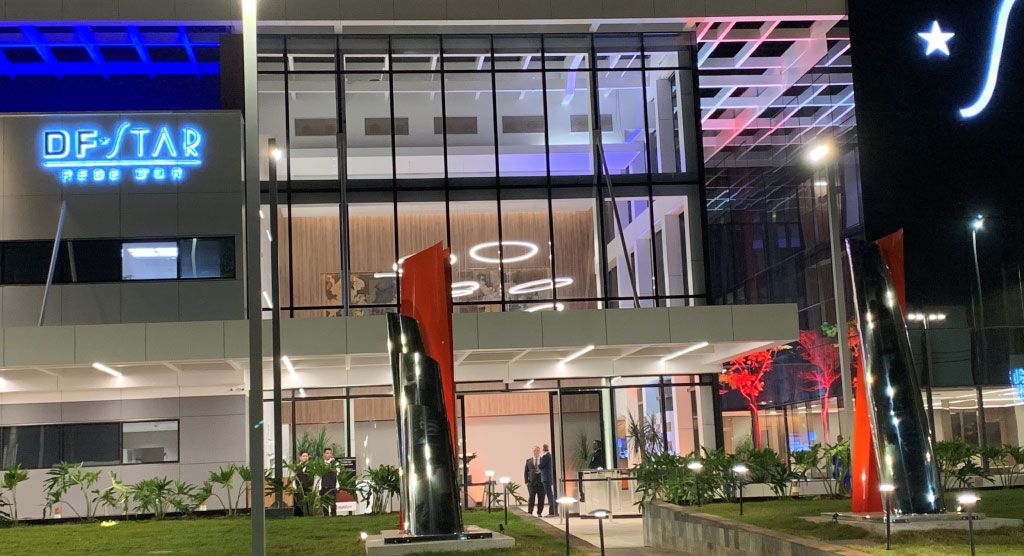Linac-based cranial SRS a mainstay in many departments

SRS veteran Prof. Frank Lohr reflects on the “Swiss Army Knife” of radiotherapy

While Leksell Gamma Knife® stereotactic radiosurgery (SRS) is the undisputed gold standard for treating cranial indications, the linear accelerator maintains its position as the most widely used platform for cranial SRS – and its capabilities have only improved in recent years with advances in beam-shaping and beam delivery speed. In a recent Elekta webinar titled “Linac-based SRS in a High Throughput Environment,” Frank Lohr, MD, Associate Professor of Radiation Therapy at the University of Modena (Modena, Italy) and his colleague, Medical Physicist Elisa Cennachi, PhD, gave a wide-ranging presentation on linac-based cranial SRS.
Elekta recently spoke with Prof. Lohr on some aspects of linac-based SRS.
Elekta: Apart from the treatment platform employed, why is cranial SRS more important than ever?
Prof. Lohr: There has been a paradigm change, in which increasingly better systemic control actually requires more local treatments in the central nervous system. During the last five years – with the introduction of more efficient systemic therapy, such as immunotherapy and various small molecules, like PARP inhibitors – the number of metastatic patients that live longer has gone up. So, because you took care of the systemic problem better, that has accentuated the need for local control. We see a lot more people who, even with advanced disease, are relatively controlled in the brain; they relapse in the brain, but not immediately with 20 mets, more like one or two. That’s one of the reasons we hardly do WBRT anymore – the patients don’t present as frequently with a large number of mets.
Elekta: How important is the tool you use for cranial SRS?
Prof. Lohr: Gamma Knife is a great and easy tool and is the gold standard for SRS. If, however, a center’s SRS caseload is modest and has to treat other indications and the staff if willing to perform the extra linac QA required, there are a variety of useful things you can do with the treatment system. These include whole-body irradiation, such as VMAT TBI, focalized IMRT, SBRT and, of course, cranial SRS. The linac remains the Swiss Army Knife of radiotherapy – it’s extremely versatile. Using a linac, I might add that with a six degrees of freedom [6DoF] table, like Elekta’s HexaPOD™, and a perfectly calibrated table base, the linac and Gamma Knife systems perform very similarly, while treatment planning may still be easier for Gamma Knife for a large number of mets to be treated simultaneously.
Elekta: What is your advice for centers considering the establishment of a linac-based SRS program for cranial indications?
Prof. Lohr: As a first step I would recommend staff participate in a vendor or ESTRO course on SRS, which would provide the theoretical background. After receiving this grounding in concepts and theory, however, it is imperative to identify a center experienced in SRS that would be willing to host a fellowship in the actual clinical practice of linac SRS. You should know how to safely and effectively execute these treatments, and there’s no replacement for firsthand, on-site training. Without it, the prospect of success is lower.
Elekta: What do centers need from a technology standpoint?
Prof. Lohr: World-class linacs today are fully capable of delivering cranial SRS. The linear accelerators we use at University of Modena are equipped with the high-speed, high-definition Agility MLC, in addition to a CBCT imaging workflow. With the Versa HD™, we use the HexaPOD evo RT robotic positioning system, which affords six degrees of positioning freedom [6DoF]. If you’re treating a single met you can do without 6DoF, because a bit of rotational error is not a problem, but if you treat the single isocenter with five mets around it, a bit of rotational error introduces a large translational error for every met. So, for multiple mets you need a system like HexaPOD, unless you want to manually correct five times and do cone beam after cone beam.
Lastly, our linacs also have flattening filter-free beam delivery, which has been extremely nice to have to get through our daily patient volume efficiently and go home at a reasonable time.
Elekta: What aspects of treatment planning are important in cranial SRS?

Prof. Lohr: We use the Monaco® treatment planning system, which employs the Monte Carlo algorithm, which gives us particularly good small field dosimetry and small field dose calculations. The models are good together with the Agility MLC. If the commissioning is done right, typically the results are excellent.
Elekta: What new technological innovations could benefit brain SRS?
Prof. Lohr: Autoplanning may slightly accelerate treatment planning for professionals with a good grasp of what they’re doing and significantly speed planning for those who aren’t quite as solid on the technique. Monaco templates are already relatively robust; putting something decent on top of it may further speed the process.
Robust autocontouring is still elusive, but when it arrives it will be the real game-changer. It is finally slowly creeping in, and in some indications touch-up times after autocontouring are already shorter than doing it all manually with interpolation.
Learn more from Drs. Lohr and Cennachi on cranial SRS.
Discover the advantages of Versa HD for cranial SRS.
LWBVHD220518





